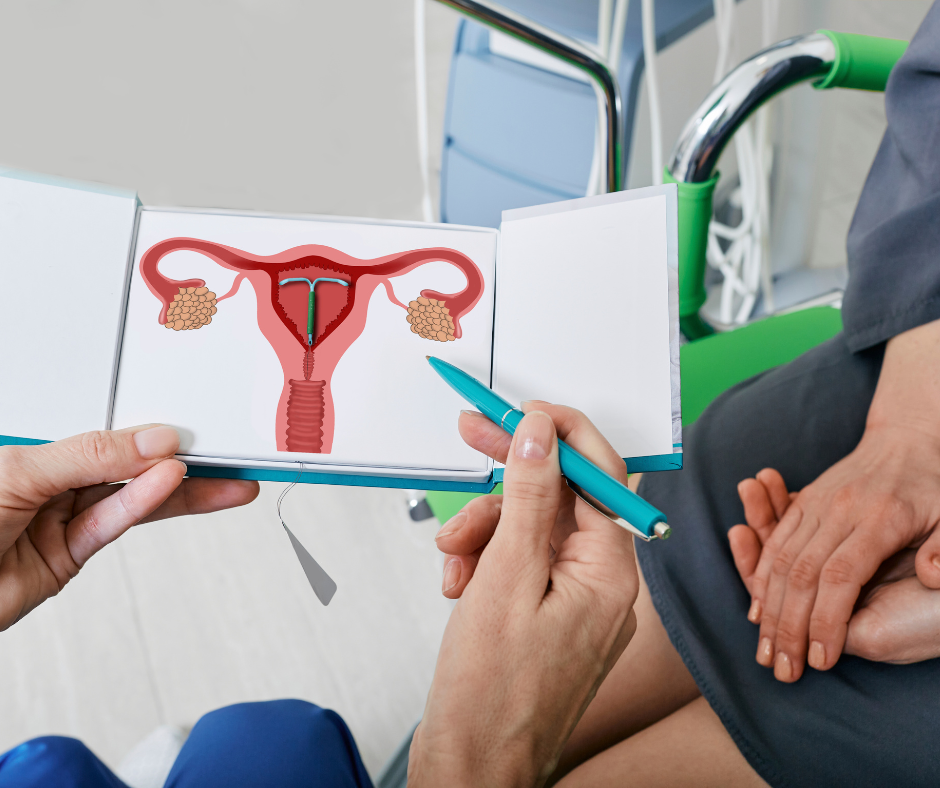Long-acting reversible contraceptives (LARCs) are among the most effective birth control methods available today. These include intrauterine devices (IUDs) and contraceptive implants, which provide long-term protection against pregnancy without requiring daily attention. Many people prefer LARCs because they are convenient, highly reliable, and reversible.
Recommended: Top 10 Myths and Misconceptions of Family Planning
However, like any birth control method, LARCs come with both benefits and drawbacks. While they offer years of protection and ease of use, some users may experience side effects or discomfort during insertion.
In this blog, we’ll explore the pros and cons of LARCs to help you decide if they’re the right choice for you.
What are LARCs?
Long-acting reversible contraceptives (LARCs) are highly effective birth control methods that provide long-term pregnancy prevention while remaining reversible. This means they can be removed at any time, allowing fertility to return to normal.

LARCs include two main types:
- Intrauterine Devices (IUDs) – Small, T-shaped devices inserted into the uterus. They can be hormonal (releasing progestin) or non-hormonal (made of copper).
- Contraceptive Implants – A small rod placed under the skin of the upper arm that slowly releases hormones to prevent pregnancy.
Recommended: How To Choose The Right Birth Control Method For You
These methods are over 99% effective, making them one of the most reliable forms of birth control. Unlike pills or injections, LARCs do not require daily or frequent maintenance, making them a convenient option for many people.
Types of Long-Acting Reversible Contraceptives (LARCs)
LARCs are divided into two main types: intrauterine devices (IUDs) and contraceptive implants. Both provide long-term pregnancy prevention and can be removed at any time if pregnancy is desired.
1. Intrauterine Devices (IUDs)
An IUD is a small, T-shaped device inserted into the uterus by a healthcare provider. It prevents pregnancy by either releasing hormones or using copper to interfere with sperm movement. IUDs are over 99% effective and can last for 3 to 10 years, depending on the type.
- Hormonal IUDs (e.g., Mirena, Kyleena, Skyla, Liletta)
- Release progestin, which thickens cervical mucus and prevents ovulation.
- Lasts between 3 to 8 years, depending on the brand.
- May reduce menstrual cramps and lighten periods.
- Non-Hormonal (Copper) IUDs (e.g., Paragard)
- Made of copper, which creates an inflammatory reaction that prevents sperm from fertilizing an egg.
- Lasts up to 10 years.
- May cause heavier periods and more cramping, especially in the first few months.
2. Contraceptive Implants
A contraceptive implant is a small, flexible rod placed under the skin of the upper arm. It releases a steady dose of progestin to prevent pregnancy by stopping ovulation and thickening cervical mucus.
Recommended: How To Choose The Right Birth Control Method For You
- Example: Nexplanon, Jadelle, Implanon
- Over 99% effective.
- Lasts up to 3 to 5 years.
- Requires a minor procedure for insertion and removal.
- May cause irregular periods, but some users experience lighter or no periods at all.
Pros of Long-Acting Reversible Contraceptives (LARCs)
Long-acting reversible contraceptives (LARCs) are one of the most effective and convenient birth control options available. They offer numerous benefits compared to short-term methods like pills, patches, or injections. Here are some of the key advantages:
1. Highly Effective (Over 99% Success Rate)
LARCs have a failure rate of less than 1%, making them one of the most reliable forms of birth control. Since they don’t require daily attention, there is no risk of user error, like forgetting to take a pill.
2. Long-Lasting Protection
- Hormonal IUDs: Last 3 to 8 years
- Copper IUDs: Last up to 10 years
- Implants: Last 3 to 5 years
Once inserted, they provide continuous pregnancy prevention without needing frequent replacements.
3. Reversible and Fertility Returns Quickly
LARCs do not cause permanent infertility. Once removed, most users can conceive within a short period, making them ideal for people who want long-term birth control but may want children in the future.
4. Low Maintenance and No Daily Effort
Unlike birth control pills that require daily intake, LARCs work in the background without needing regular attention, making them convenient for busy individuals.
Recommended: How To Prepare Financially And Emotionally For Family Planning
5. Cost-Effective in the Long Run
Although the upfront cost may be higher than short-term contraceptives, LARCs save money over time by providing years of protection without the need for refills or frequent doctor visits.
6. Suitable for Those Who Can’t Use Estrogen
Some birth control pills contain estrogen, which isn’t suitable for people with certain health conditions. LARCs, particularly hormonal IUDs and implants, only use progestin or no hormones at all (copper IUD), making them safer for some users.
7. May Reduce Menstrual Symptoms (Hormonal IUDs & Implants)
- Can reduce period cramps and make periods lighter or even stop them altogether.
- Helpful for conditions like endometriosis and heavy menstrual bleeding.
8. Safe for Most Women, Including Those Who Have Not Given Birth
LARCs can be used by both younger individuals and those who have never had children, making them a versatile birth control option.
Recommended: Best Fertility Tracker to Avoid Pregnancy
Cons of Long-Acting Reversible Contraceptives (LARCs)
While long-acting reversible contraceptives (LARCs) are highly effective and convenient, they also come with potential downsides. It’s important to consider these factors before choosing a method that best suits your body and lifestyle.
1. Requires a Medical Procedure for Insertion and Removal
- IUDs must be inserted into the uterus by a healthcare provider, which may cause discomfort or cramping.
- Implants require a minor surgical procedure to insert and remove the device from the arm.
- Some people may find the procedures uncomfortable or anxiety-inducing.

2. Possible Side Effects
- Hormonal IUDs & Implants: May cause irregular bleeding, mood changes, headaches, or breast tenderness.
- Copper IUDs: Can cause heavier periods and increased cramping, especially in the first few months after insertion.
3. Does Not Protect Against Sexually Transmitted Infections (STIs)
LARCs only prevent pregnancy and do not provide protection against STIs. If you have multiple partners or are at risk for STIs, using condoms along with LARCs is recommended.
4. Risk of Insertion-Related Complications
- In rare cases, IUDs can be expelled (come out on their own) or perforate the uterus during insertion.
- Some people may experience pain or dizziness immediately after placement.
5. Hormonal Side Effects (For Hormonal IUDs & Implants)
- Some people may experience mood swings, acne, weight changes, or decreased libido.
- Not everyone reacts the same way to hormones, so effects vary by individual.
Recommended: Can Birth Control Cause Extreme Fatigue?
6. Menstrual Changes
- Hormonal IUDs & Implants: May cause irregular periods or spotting, especially in the first few months. Some users may stop having periods completely.
- Copper IUDs: Can increase menstrual bleeding and cramping, making them unsuitable for those who already experience heavy periods.
7. High Upfront Cost
- While cost-effective in the long run, LARCs have a higher initial cost compared to other contraceptive methods.
- Some insurance plans or healthcare systems may cover the cost, but for those without coverage, it can be expensive.
8. Removal Requires a Healthcare Provider
Unlike pills or condoms, which can be stopped at any time, IUDs and implants require a doctor’s visit for removal, which may not always be convenient.
Who Should Consider Long-Acting Reversible Contraceptives (LARCs)?
Long-acting reversible contraceptives (LARCs) are a great option for many people looking for effective, low-maintenance birth control. However, they may be more suitable for some individuals than others. Here’s who might benefit the most from LARCs:
1. Individuals Seeking Highly Effective Birth Control
LARCs have a failure rate of less than 1%, making them one of the most reliable forms of contraception. They eliminate the risk of user error, unlike birth control pills, patches, or injections.
2. Those Who Prefer Low-Maintenance Contraception
If you don’t want the hassle of remembering to take a pill daily or replace patches or rings frequently, LARCs provide a “set-it-and-forget-it” solution.
Recommended: Best Multivitamins For Going Off Birth Control
3. People Who Want Long-Term Pregnancy Prevention
- Hormonal IUDs last 3 to 8 years
- Copper IUDs last up to 10 years
- Implants last 3 to 5 years
These options are ideal for individuals who don’t plan to get pregnant soon but want the flexibility to conceive later.
4. Those Who Can’t Use Estrogen-Based Birth Control
- Some people experience negative side effects from estrogen (found in many birth control pills, patches, and rings).
- Hormonal IUDs and implants use only progestin, and copper IUDs contain no hormones at all, making them a safer alternative.
5. Individuals with Heavy or Painful Periods (For Hormonal IUDs & Implants)
- Hormonal IUDs can make periods lighter or stop them altogether, helping individuals with heavy bleeding or painful menstrual cramps.
- Implants may also reduce menstrual flow over time.
6. People Who Have Given Birth or Haven’t Had Children
- LARCs were once recommended mainly for people who had already given birth, but they are now safe and effective for people of all ages—even those who have never been pregnant.
7. Individuals Who Want a Non-Hormonal Option (For Copper IUD Users)
- If you prefer a hormone-free birth control method, the copper IUD is an effective choice, lasting up to 10 years while preventing pregnancy naturally.
8. Those Who Need Discreet Birth Control
- LARCs are invisible and private—once inserted, no one else will know you have them unless you choose to share.
- This is ideal for people who prefer to keep their contraceptive choices personal.
Myths and Misconceptions About Long-Acting Reversible Contraceptives (LARCs)
Despite being safe, effective, and widely recommended, long-acting reversible contraceptives (LARCs) are often surrounded by myths and misinformation. Let’s debunk some common misconceptions!
1. Myth: LARCs Can Cause Infertility
Truth: LARCs do not affect long-term fertility. Once removed, fertility returns quickly, and many people conceive within months.
Recommended: Can You be on Birth Control and Donate Eggs?
2. Myth: LARCs Are Only for Women Who Have Given Birth
Truth: LARCs are safe for anyone of reproductive age, including teenagers and those who have never been pregnant.

3. Myth: IUDs Can Move to Other Parts of the Body
Truth: An IUD stays in the uterus unless expelled. While rare, if an IUD moves out of place, a doctor can adjust or remove it. It does not travel to the heart, brain, or anywhere else!
4. Myth: The Insertion Procedure Is Extremely Painful
Truth: Discomfort levels vary, but many people describe it as mild to moderate cramping. Pain relief options like ibuprofen or local anesthesia can help make insertion more comfortable.
5. Myth: The Copper IUD Causes Hormonal Side Effects
Truth: The copper IUD is hormone-free, so it does not cause weight gain, mood changes, or hormonal side effects. However, it may lead to heavier periods in some individuals.
6. Myth: LARCs Increase the Risk of Infections or Cancer
Truth: LARCs do not cause cancer or increase the risk of infections. The risk of infection is only slightly higher within the first few weeks of insertion, but this is rare.
Recommended: Family Planning Options for Couples Over 35
7. Myth: LARCs Are Permanent
Truth: LARCs are 100% reversible. You can have them removed anytime if you want to switch methods or try to conceive.
8. Myth: LARCs Are Only for Women
Truth: While most LARCs are designed for individuals with a uterus, men can consider long-acting contraception options like vasectomy, which is also safe and reversible in some cases.
Conclusion
Long-acting reversible contraceptives (LARCs) offer a highly effective and convenient option for individuals seeking long-term birth control. With their ability to provide protection for several years while remaining completely reversible, LARCs are a great choice for those who want a low-maintenance contraceptive method.
While there are both pros and cons, understanding the facts about LARCs helps individuals make informed decisions about their reproductive health. Consulting a healthcare professional can provide personalized guidance on choosing the right contraceptive method based on individual needs and lifestyle.
Ultimately, whether LARCs are the right choice depends on personal preferences, health considerations, and long-term family planning goals.
